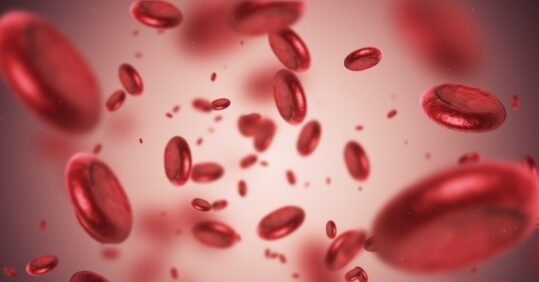What to look out for in a suspected case of anaemia

Shortly before the outbreak of the Covid-19 pandemic, the RCN released a report with guidance for nurses and health care professionals looking at iron deficiency and anaemia in adults. With general practice slowly returning to normal as the pandemic eases, Dr Toni Hazell, a GP based in North London, summarises the key things to look out for in patients with anaemia.
Anaemia is defined as a haemoglobin (Hb) level which is two standard deviations below the normal.1 Normal ranges vary with age and sex, as given in the table below.
Population group |
Definition of anaemia |
|
Men aged over 15 |
<130 g/L |
|
Women aged over 15 who are not pregnant |
< 120 g/L |
|
Children aged 12-14 |
< 120 g/L |
|
Pregnant women |
< 110 g/L (1st trimester) < 105 g/L (2nd/3rd trimesters) |
|
Postpartum Related Article: Diagnosis Connect service will link people to advice from charities |
< 100 g/L |
It is important to have a logical approach to a patient with anaemia, in order to work out the underlying cause. There are two key questions to ask. Firstly, what type of anaemia is it – microcytic (small cells), normocytic (normal sized cells) or macrocytic (big cells). Secondly, what is the likely underlying cause – these can range widely from benign conditions to malignancy.
Anaemia is classified by the size of the red blood cells; this is given within a full blood count as the mean cell volume, or MCV. A normal MCV is around 80 – 100 fl and a patient who is anaemic with normal size red blood cells has a normocytic anaemia.
If the cells are small then the anaemia is microcytic and if they are large then it is macrocytic. This classification is your first step to reaching a diagnosis of the underlying cause; some of the causes of anaemia are listed in the table below, although in an article of this length the list cannot be exhaustive.
Common causes of anaemia2,3,4,5
Microcytic |
Normocytic |
Macrocytic |
|
Iron deficiency |
Anaemia of chronic disease* |
B12 and folate deficiency |
|
Thalassaemia |
Sickle cell disease |
Alcohol excess |
|
Sideroblastic anaemia |
Leukaemia |
Iatrogenic e.g. methotrexate |
|
Anaemia of chronic disease* |
Myelofibrosis |
Myelodysplasia or other primary haematological diseases |
|
Lead poisoning |
Haemolytic conditions such as autoimmune anaemia |
Liver disease |
|
Related Article: CVD prevention must be national health priority, says report |
|
Thyroid deficiency |
|
|
|
Smoking |
*Anaemia of chronic disease is normocytic in 80% of cases and microcytic for the other 20%
Looking at the MCV therefore helps you to start narrowing down the possible causes for your patient’s condition. A well-known aphorism in medicine is ‘when you hear hooves, think horses, not zebras’; in other words, common things are common.
A microcytic anaemia is more likely to be iron deficiency than lead poisoning, and if you know that your person has longstanding renal failure on dialysis, then there is a fair chance that their macrocytic anaemia is an anaemia of chronic disease. But, while common things are common, rare things do happen and patients with rare diseases are often diagnosed late,6 so we have to always keep our antennae twitching for the occasional rarity.
Your first step to a diagnosis is probably going to involve sticking another needle into the patient, as more blood tests will be needed. From the table above, depending on the type of anaemia, it might be sensible to check iron (usually done as ferritin), B12/folate, liver, kidney and thyroid function as well as possible testing for thalassaemia and sickle cell disease.
If the anaemia is normocytic then a reticulocyte count (a measure of the speed of production of red cells in the bone marrow) may help, as this gives an indication of whether there is increased haemolysis (cell turnover), which can help to guide the diagnosis of some of the primary haematological conditions.
This next set of blood tests, along with the history, might give you the answer. If the anaemia is macrocytic, all the other tests are normal and your patient is taking methotrexate – or known to have a long history of alcohol excess—then you can probably make the diagnosis of iatrogenic or alcohol induced anaemia by default, and merely need to keen an eye to make sure that the anaemia isn’t progressing.
But in some cases it will just be one more step on the road to diagnosis. Take iron deficiency as an example. It is the commonest cause of anaemia, affecting 500 million people worldwide,7 but finding iron deficiency is not the end of the diagnostic pathway; you need to know why the patient is lacking in iron.
Once genetic conditions such as thalassaemia have been excluded, iron deficiency is, broadly speaking, due to reduced intake of iron, or increased loss. The former might be as simple as a dietary deficiency (although on average it will take some years of a poor diet for this to occur), or it might mean that the patient is not absorbing iron, due to a potentially serious condition such as coeliac disease or inflammatory bowel disease.
Moving to the causes of iron loss, in a young woman with menorrhagia (heavy periods) and no other worrying symptoms, I will usually treat her menorrhagia and see if that improves things. The improvement can be dramatic, and I recall a recent patient with an Hb of under 60, who didn’t attend hospital for a transfusion due to fears of catching COVID-19. To my amazement, with some iron and her periods lightened, her Hb was in the normal range within six weeks.
Related Article: Prescribing in England to be led by a single national formulary
On the more serious side, a new iron deficiency anaemia in an older patient needs to be considered to be a gastroenterological malignancy until proven otherwise. Over the age of 60, iron deficiency anaemia alone should prompt a two-week wait referral to look for colon cancer and if it is accompanied by rectal bleeding then the referral should be done even if the patient is under 50.
For those aged over 55 with upper abdominal pain and low haemoglobin, an endoscopy should also be considered to look for stomach cancer. Failing to look for the cause of an iron deficiency can be tragic for the patient, and expensive for the clinician’s indemnity provider.9
There are many causes of anaemia and it is impossible to cover them all in one article. As with any other finding, be it in the history, in the examination or in a test, it is important always to retain professional curiosity and ask ‘why’. If you keep asking that until you reach a final diagnosis, you will be practicing safely and your patients will thank you for it.
Further information can be found on the RCN website.
References
- https://cks.nice.org.uk/topics/anaemia-iron-deficiency/background-information/definition/
- https://cks.nice.org.uk/topics/anaemia-iron-deficiency/diagnosis/differential-diagnosis/
- https://cks.nice.org.uk/topics/anaemia-b12-folate-deficiency/diagnosis/differential-diagnosis/
- https://www.aafp.org/afp/2000/1115/p2264.html#:~:text
- Yilmaz G, Shaikh H. Normochromic Normocytic Anemia. [Updated 2021 Mar 8]. In: StatPearls [Internet]. Treasure Island (FL): StatPearls Publishing; 2021
- de Vries E, Fransen L, van den Aker M, Meijboom BR. Preventing gatekeeping delays in the diagnosis of rare diseases. Br J Gen Pract. 2018;68(668):145-146. doi:10.3399/bjgp18X695225
- https://cks.nice.org.uk/topics/anaemia-iron-deficiency/background-information/prevalence/
- https://www.nice.org.uk/guidance/ng12/resources/suspected-cancer-recognition-and-referral-pdf-1837268071621
- https://www.medicalprotection.org/caribbean-and-bermuda/casebook-resources/case-reports/case-reports/row-deficient-investigation-of-iron-deficiency

See how our symptom tool can help you make better sense of patient presentations
Click here to search a symptom




